From Olga Rozhneva: Many of my stories (“Encounter With the Invisible World,” “Athonite Stories From Fr. Savvaty,” “A Short Story about the Short Life of Slava the Czech,” and others) were written based on the stories from the sisters of the Kazan-St. Tryphon Hermitage and its spiritual father Igumen Savvaty (Rudakov). Today, dear readers, I would like to share new stories with you that were told me to by a former sister of this monastery who is now the abbess of Holy Transfiguration Monastery in Usolye, Mother Sergia.
How they called me “Nun” in my childhood
The old babushka parishioners of the village church would call me “Nun” because of my unchildlike zeal for prayer and the Church services.
There were no churches in my native village of Lyadi in the Perm Region during my childhood, but every summer my mother would send me to visit my grandmother in the village of Serga in the Kungur District. They had a church there, although it was badly damaged, practically destroyed during the years of the persecution against the Church. The villagers had restored one of the altars, where they had Church services.
Grandma always took me with her to church, and I was the only child there, then the only teenager, and in high school—the only girl amongst the old women. Grandma tried to get my twin sister and brothers involved in the services, but they would start fooling around and quickly run outside to what were for them more interesting activities.
I really loved to pray in church. The Church hymns, the glistening of the lampadas and candles, the old icons—all of this sank into and warmed my soul. At home, I would sing the melodies of the troparia and the Church hymns, and for me, going to church with my grandmother was always like a holiday, like something mysterious and extraordinary. So, since childhood I’ve known what Liturgy is, the All-Night Vigil…
My monastic life began while I was still at home
When I was in ninth grade, they built a chapel of the Iveron Icon of the Mother of God in Lyadi and I started going there. I helped out on the kliros, singing and reading, and I attended Sunday School.
On the one hand, I was a typical child, not some kind of recluse, and I would play with the other kids in the yard. On the other hand, when I got older, I didn’t go out with boys, and clubs weren’t interesting to me in the slightest. I read the prayer rule every day.
I was born in 1982, and in the late 1990s spiritual books started appearing; I read Abba Dorotheos, St. John Climacus, and delighted in the asceticism of Elder Joseph the Hesychast. Thus, you could say, my monastic life began while I was still at home: A flame was lit in my heart of zeal for God. I was drawn by another, non-secular, life—that of monasticism.
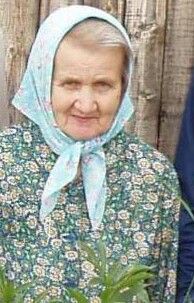 My beloved grandmother
My beloved grandmother
Is there the will of God for my choice?
When I was still in school and thinking about monasticism, I really wanted to know if God had His will for my choice. One time we went to Diveyevo, where they had already restored the monastery. And I had the thought of getting blessed for monasticism by St. Seraphim of Sarov. I really wanted the saint, whether through some circumstances or through a spiritual person, to give me a sign of the correctness of my chosen path.
There were obstacles: Suddenly I was told there were no more tickets for the trip. They added that I could come right to the bus in the morning, and if someone didn’t show up, then they’d take me.
The morning came, and indeed, someone didn’t show up, and they took me. I remember thinking that means it’s the will of God for me to get a blessing from St. Seraphim.
In Diveyevo, we venerated the relics of St. Seraphim and prayed at the service. When my friend and I were leaving, late in the evening, we went out to the bus—and there was no one from our group yet. We turned towards the cathedral with the saint’s relics and sang for our parting: “O my most blessed Queen, O Theotokos my hope…”
Against the background of the night sky, the church was all lit up, and suddenly a white dove flew out from behind the dome. It flew around the dome three times, appearing before us then disappearing again, and then disappeared into the darkness. For me, it was some kind of symbol, a sign.
“Now you have a direct path to Heaven!”
Then we went to Sanaxar Monastery, where Elder Ieronym (1932-2001) was then laboring. When I approached him, I couldn’t even utter a word. Such grace, such incredible love emanated from him; he simply shone with an unearthly, Taboric light.
The Elder met everyone who came to him warmly, blessed them, and would give them a word. When I went up to him, I couldn’t even ask anything. I just started crying from the emotion that came over me.
But the Elder looked at me attentively and gently said:
“Why are you crying?! Don’t cry! Look: Now you have a direct path to Heaven!”
And he pointed upwards.
After that trip, I no longer had any doubts about the correctness of my chosen path.
The Kazan-St. Tryphon Hermitage
I was well qualified when I finished school, and I probably could have gone to any university. My mother was working as an accountant, and she and my father insisted that I go to the Faculty of Economics. But instead of the institute, I went to the Holy Dormition Monastery in Perm and went to the services there.
Then one old babushka, a parishioner of our church, invited me to go with her to Chusovskie Gorodki, to the Kazan-St. Tryphon Hermitage, and I was very happy.
We got there, and I was simply enchanted by the beauty of this place, the friendliness and hospitality of the sisters of the monastery and its spiritual father. I really wanted to stay there. Batiushka, Igumen Savvaty, immediately noticed me for some reason and invited me to come, apparently sensing my monastic dispensation.
A Divine calling to the monastic life
I felt such a strong burning… What can I compare it to? When someone gets married, he thinks: I love my spouse so much, I want to spend my whole life with him, no matter what winds blow, no matter what trials we have to endure.
And I felt such a strong desire to labor in the monastery, such a Divine calling to the monastic life. It was this burning that gave me the strength to overcome the later inevitable temptations and obstacles.
Parental blessing
When I got back home, I was afraid to tell my parents about my decision. I’m their only child, and I knew they would be against it. Finally, I resolved to, and I told them I wanted to go live for a while at the Kazan-St. Tryphon Hermitage. They took it very hard, but didn’t try to stop me. They let me make this choice. I am still very grateful to them, because many sisters in the monastery have parents who were not only against it, but did everything they could to hinder them, even coming to try to take them home.
In the summer of 2000, I took my last exams at school, went home, knelt before my parents and asked their blessing to go to the monastery. Mama took the Iveron Icon of the Mother of God, blessed me, and we all wept together. It was scary for us all: for my parents to let their seventeen-year-old daughter go off somewhere unknown, and for me, as everything ahead of me was unknown.
I invited my mother to go with me to see these beautiful places on the bank of the Chusovaya River to see the monastery, the trapeza, the church, and to meet Batiushka and the sisters.
When someone goes to a monastery, their family is given a guardian angel
So my mother and I went to the Kazan-St. Tryphon Hermitage. My mother cried the whole way—worrying about where she was taking her daughter. When we arrived, we immediately went to see the monastery’s spiritual father. Batiushka received us very tenderly and told my mama not to worry, that everything would be fine. She looked around the monastery and realized that there was a good spiritual father here, friendly sisters, a safe environment, and she calmed down a bit and felt comforted.
As we parted, I told her:
“Mama, don’t cry anymore! I read that when someone goes to a monastery, their family is given a guardian angel, who protects the monastic’s parents and relatives…”
And indeed, looking back I see: During the years of my monastic life, everything has always been prosperous, calm, and smooth for my parents—no particular sorrows or incidents, as if the Lord protects my family.
“What happened at home?”
My mama and papa have been going to church for many years now, confessing and communing.
Once, a while after I had left for the monastery, I called home, heard my mother’s voice, and felt a special grace.
I asked:
“Mama, I sense that something good happened for you and papa… What happened at home?”
Mama immediately understood me and joyously said that she and papa had gotten married in the Church.
We were burning in spirit
When I had just gotten to the monastery, there were very many young people there. There was such a special calling from God in those years. Monasteries were being opened and restored, and they had to be filled with people who would revive them. And so many young people responded to this Divine call.
We came, we were burning in spirit, and we were strong and brave. With our young girlish hands, we restored the churches, replaced the floors, took out the garbage, painted, whitewashed, plastered, planted gardens, grazed cattle, cooked meals on the stove—everything was up to us.
We were of one mind. In the evenings, we would gather and read commentaries on the Gospel, the lives of the saints, and discuss it—it was all very interesting for us and it warmed our souls.
Later, some of these young people were sifted out by various circumstances: Many were called, but few were chosen.
And now there are no such people. Everyone is buried in their phone… Most of the people laboring in monasteries now are those who came in the 1990s. Young people come much less often, and for some reason it’s very sick people—both mentally and physically—who come more often.
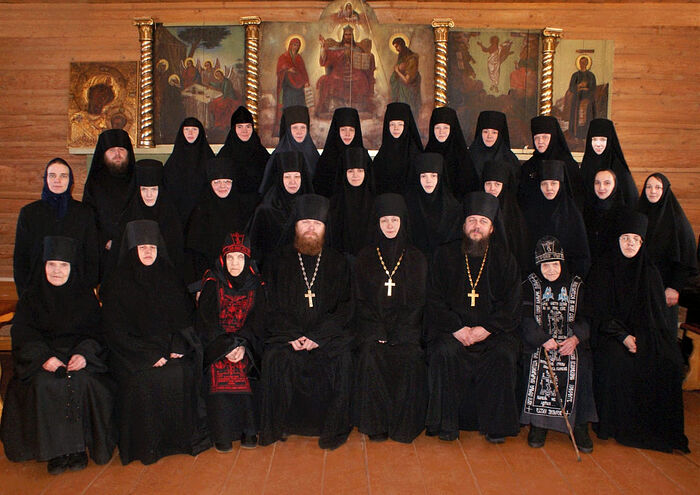 Monastics and clergy of Kazan-St. Tryphon Hermitage
Monastics and clergy of Kazan-St. Tryphon Hermitage
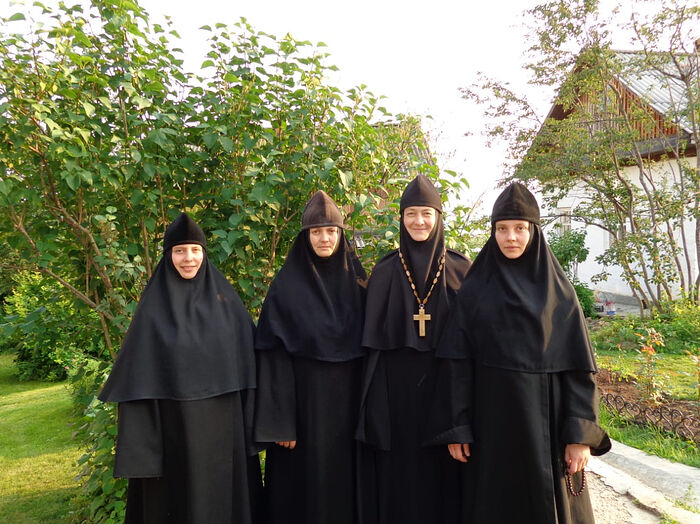 With the abbess and sisters of Kazan-St. Tryphon Hermitage
With the abbess and sisters of Kazan-St. Tryphon Hermitage
“You’ll be an abbess”
In the first years of my life in the monastery, Archpriest Mikhail Starkov would come. He was a spiritual child of the very revered elder in the Urals, Archpriest Nikolai Ragozin, who now rests in the crypt under our church. Fr. Mikhail was already up in years, and sometimes he was a bit of a fool for Christ. Once he stopped me and said:
“You’ll be a novice, you’ll be a riassaphore nun, you’ll be a stavrophore…”
I expected him to add: “You’ll be a schemanun.” But he said:
“You’ll be an abbess.”
I wasn’t even a novice then and didn’t attach much importance to his words. I remembered what he said only after I had become the abbess of Holy Transfiguration Monastery in Usolye. But there were still twenty long years before that.
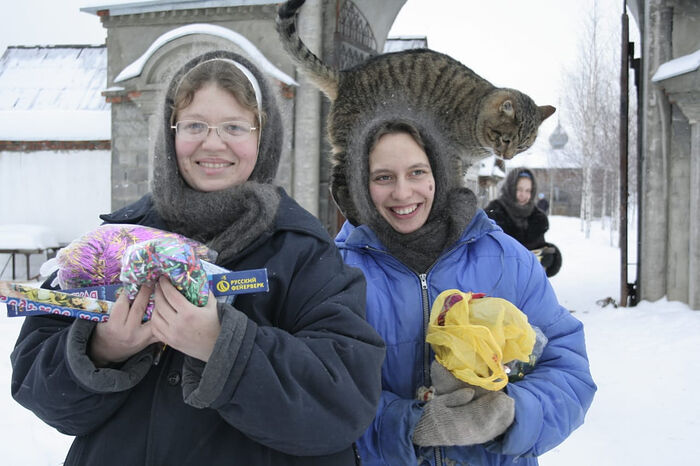 A feast at the Kazan-St. Tryphon Hermitage
A feast at the Kazan-St. Tryphon Hermitage
Monastic obediences
After a year of living at the Kazan-St. Tryphon Hermitage, they gave me a cassock, and two years later I was tonsured as a riassphore nun with the name Fevronia. I worked at a wide variety of obediences. The first, of course, was the stables. All novices usually go through this obedience. Take Vladyka Tikhon (Shevkunov) for example—he also labored at this obedience.
Then there’s the kitchen, prosphora baking, the kliros, the bakery—I had to learn everything.
Tanya is no more—there is only Fevronia
The riassaphore and stavrophore tonsures are a burial of the old man and the birth of the new. You die to the world in order to be born in the angelic rank. You stand in a white tunic with your hair down, and then you crawl along the floor from the narthex to the ambo, and the sisters shield you from prying eyes with their mantias. They sing “Make haste to open Thy Fatherly embrace to me,” and your whole life flashes before your eyes. Tears flow like a stream.
When I received the tonsure as a riassaphore, I wrote to my parents: “Mama and papa, they tonsured me with the name Fevronia. Tanya is no more—there is only Fevronia.”
They later confessed to me that they wept when they read my note: They felt like their daughter Tanya had actually died.
Elder John (Krestiankin): “Never despair!”
The sisters and I often went to Pechory to visit Elder John (Krestiankin), because our Batiushka Fr. Savvaty was his spiritual child.
I remember how we, three nuns, came to him, and the Elder started anointing us with holy oil. He drew a cross on the sisters’ foreheads, but for some reason, he drew three on mine.
When Fr. John would receive us, he would often repeat:
“Never despair!”
I would usually prepare questions beforehand to ask the Elder, but when we would go into his cell, all of the questions would disappear of themselves—such grace came from him. I didn’t want to ask anything anymore—just to be near him.
The Skete of St. Anna
In 2006, I was appointed the elder sister in the Skete of St. Anna. It was built by our spiritual father on the bank of the Chusovaya River, not far from the monastery. The monastic life and services there were according to the Athonite typikon. And, by the grace of God, we even had a piece of the relics of St. Anna.
Priests who have been to Athos who came to our skete have noted the iconography, the architecture of the church, and the atmosphere—all in the Athonite style.
The elder sister should greet every guest as Christ—with joy. You treat someone with coffee and loukoumi, you comfort them, gladden them—nothing special, but then the person wants to live on.
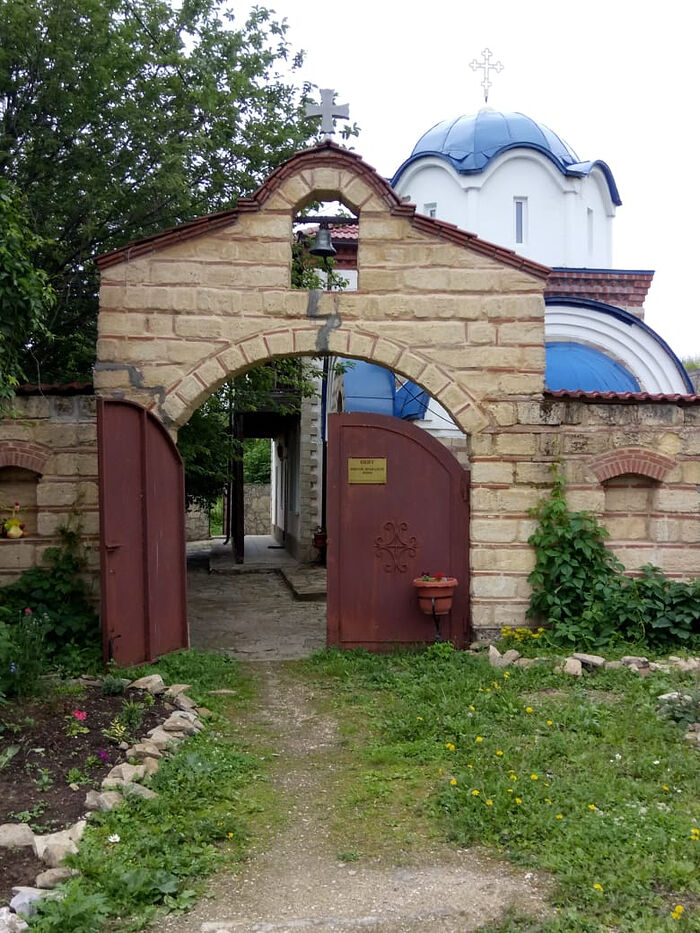 The Skete of St. Anna by the Kazan-St. Tryphon Hermitage
The Skete of St. Anna by the Kazan-St. Tryphon Hermitage
The prayerful help of St. Anna
Our skete is a special place; we have night vigils: The sisters pray every night. Childless young couples would come to us to pray for the granting of children, and St. Anna would respond to their prayers. I even kept a chronicle, recording the births of babies through St. Anna’s prayerful help.
Here’s one example: A girl got married. A year, two, three—no children. I told her:
“Go to Righteous Anna and entreat her prayerful help.”
She went, she entreated, and soon she called me to share her joy: She was expecting a child.
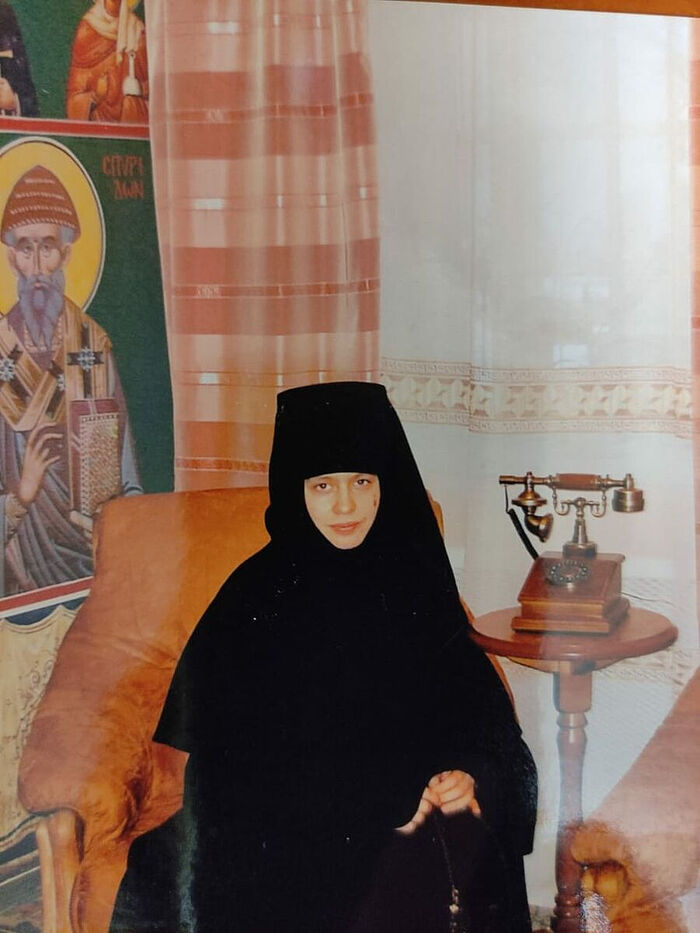 Elder sister of the Skete of St. Anna
Elder sister of the Skete of St. Anna
I was the first to be tonsured in the skete
After twenty years of life in the monastery, I was tonsured as a stavrophore nun. I was the first among the sisters to be tonsured in the skete. I wasn’t especially hopeful that our spiritual father would agree to my request, and I asked St. Anna for her intercessions—and Batiushka, to my surprise, easily agreed and tonsured me into monasticism in the skete with the name Sergia, in honor of St. Sergius of Radonezh.
The obedience of abbess of the monastery
In 2017, I was appointed the elder sister of the monastery’s dependency in the village of Mys, and not long ago, earlier this year, I found out that Vladyka Zosima of Solikamsk and Chusovoy had decided to bless me to take up the obedience of abbess of Holy Transfiguration Monastery in Usolye.
I was afraid to leave my father’s house—my native monastery, where I had grown and become a nun. I was afraid to part with my dear sisters of the Kazan-St. Tryphon Hermitage. But at the same time, I had an internal certainty that this was necessary. It was another time when the Lord calls you, and you go. I saw the providence of God in it, and our spiritual father also told me I couldn’t refuse.
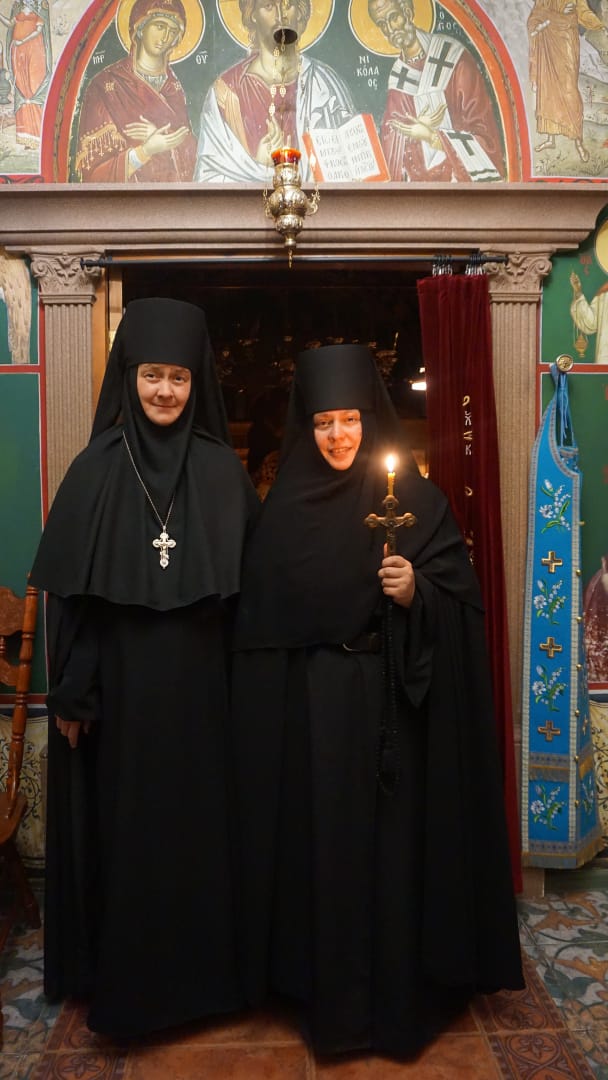 On the day of her tonsure, with Abbess Ksenia of the Kazan-St. Tryphon Hermitage /p>
On the day of her tonsure, with Abbess Ksenia of the Kazan-St. Tryphon Hermitage /p>
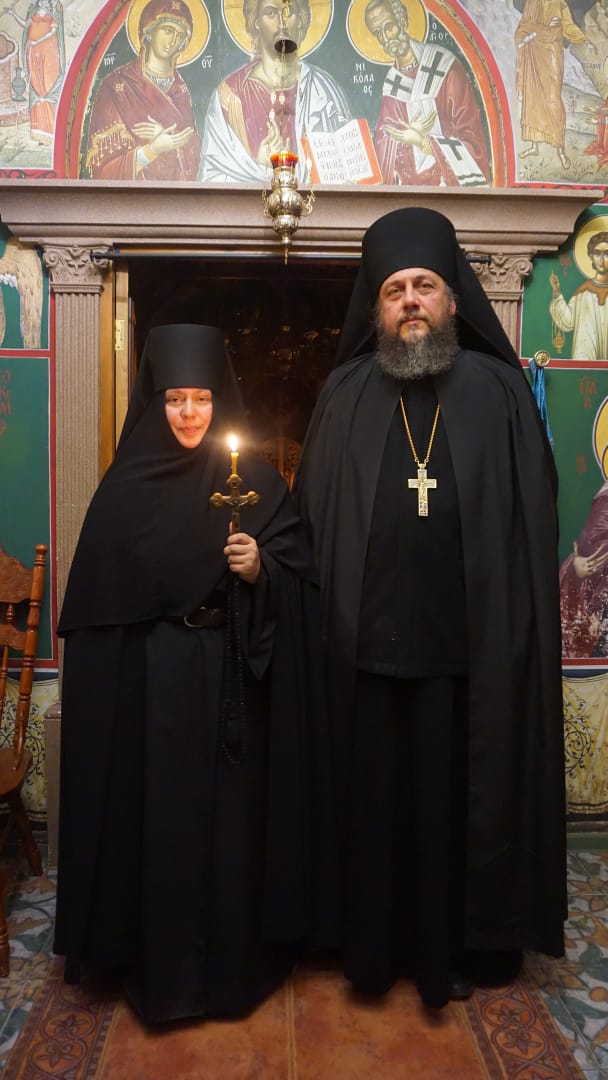 On the day of her tonsure in the skete with the monastery’s spiritual father, Igumen Savvaty
On the day of her tonsure in the skete with the monastery’s spiritual father, Igumen Savvaty
Everything here breathes of antiquity and history
When I got to Usolye, it was like I had fallen into the eighteenth century. Everything around me—the chambers of the historical museum complex, the churches, the buildings—was the same as in the days of the Stroganovs.
The household amenities too, by the way. More precisely, there weren’t any: There was no water, gas, or sewage.
But it’s very beautiful here. Everything breathes antiquity and history.
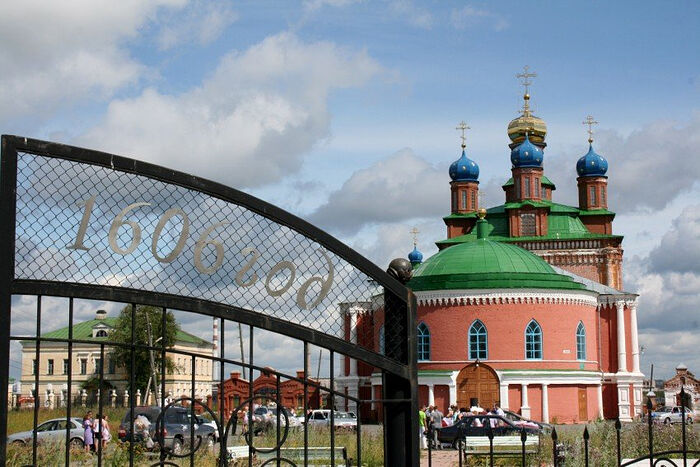 Holy Transfiguration Monastery
Holy Transfiguration Monastery
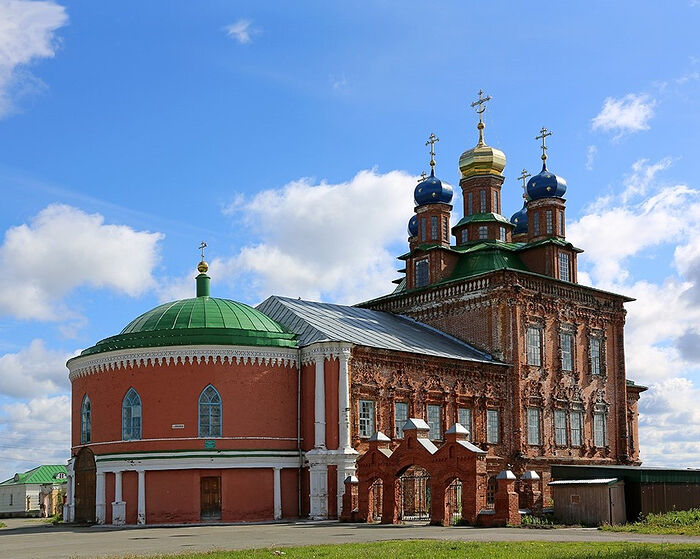 Holy Transfiguration Monastery
Holy Transfiguration Monastery
Come visit us!
There are five nuns laboring in the monastery here. They’re all aged already. They pray and labor from morning till evening—true ascetics of the spirit.
I thank God for my monastic path and the opportunity to labor for the good of the Mother Church.
Come visit us! We always make space for all pilgrims, and feed and comfort them! St. Sergius, for whom I am named, commanded the brethren to receive everyone in the holy monasteries; to feed, and comfort them, and show them hospitality.
In parting, I want to greet all readers of Pravoslavie.ru/OrthoChristian.com with the feast of the Dormition of the Most Holy Theotokos! God bless you!

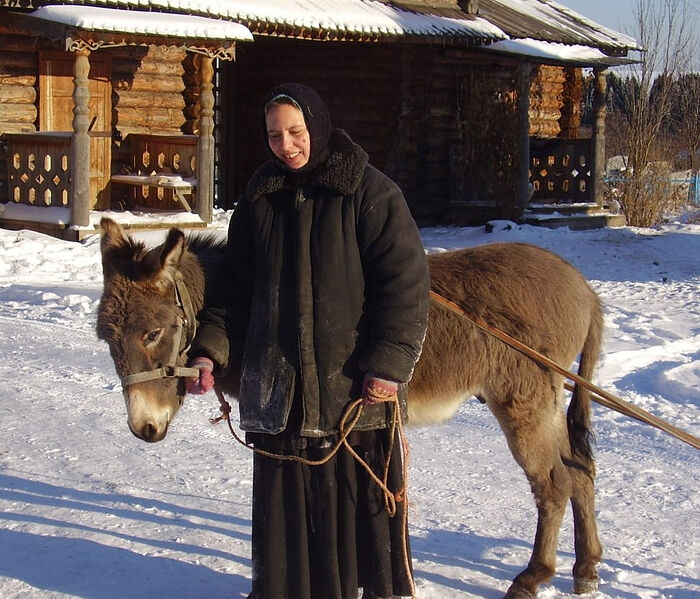
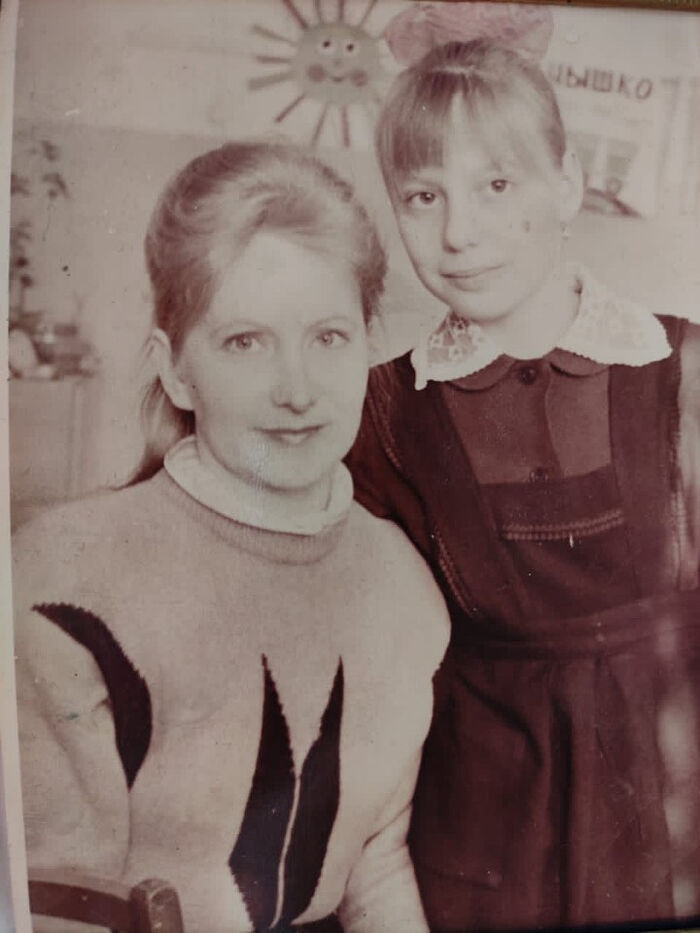
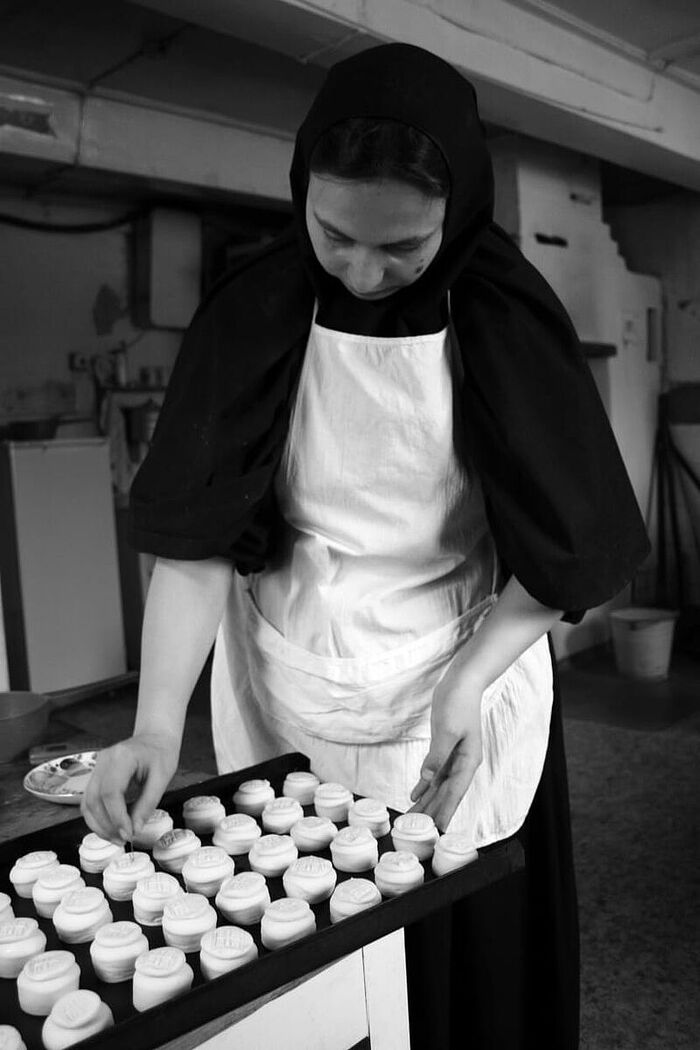
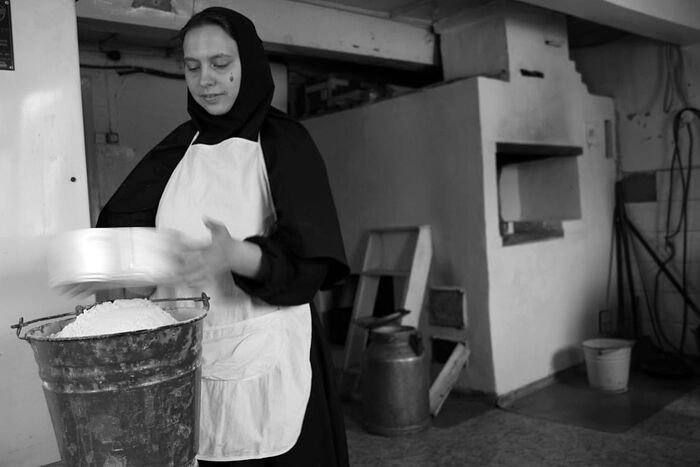
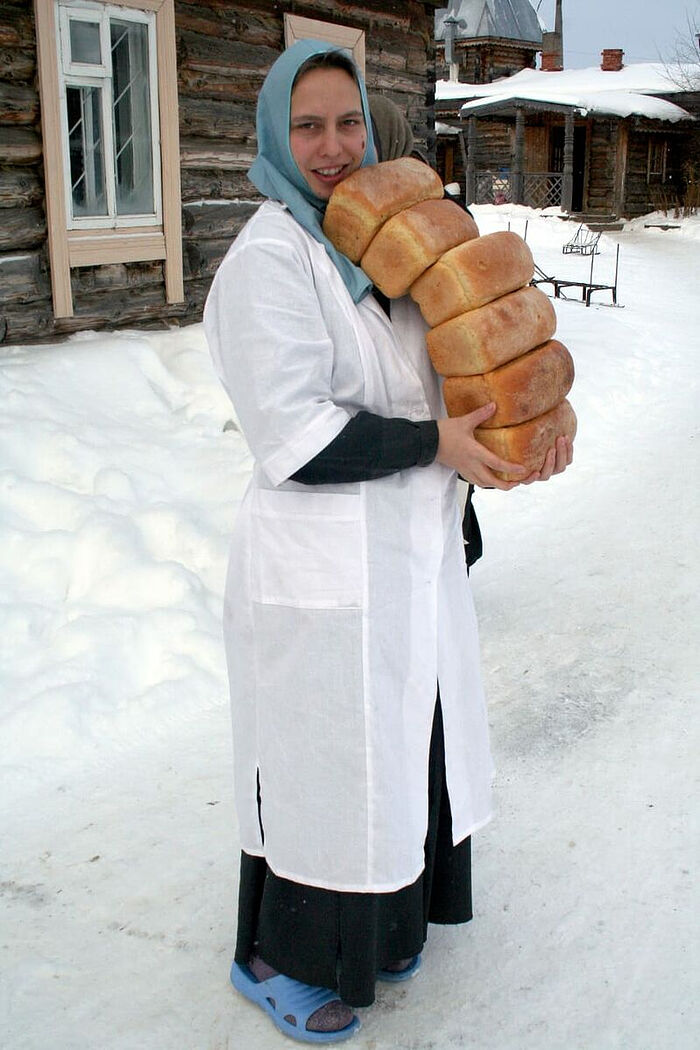
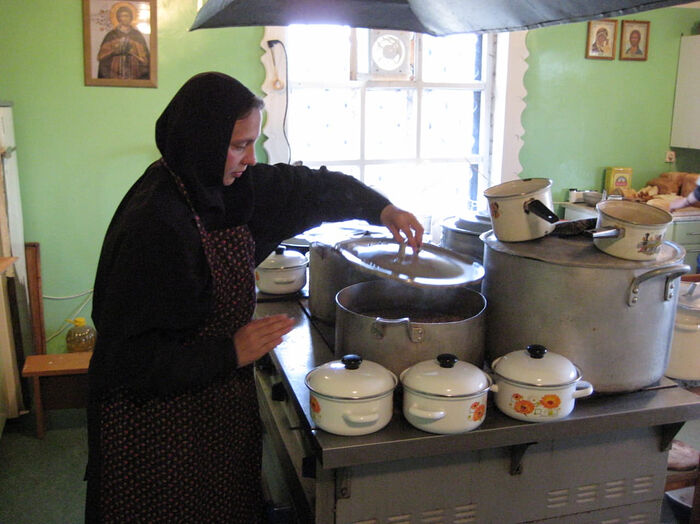
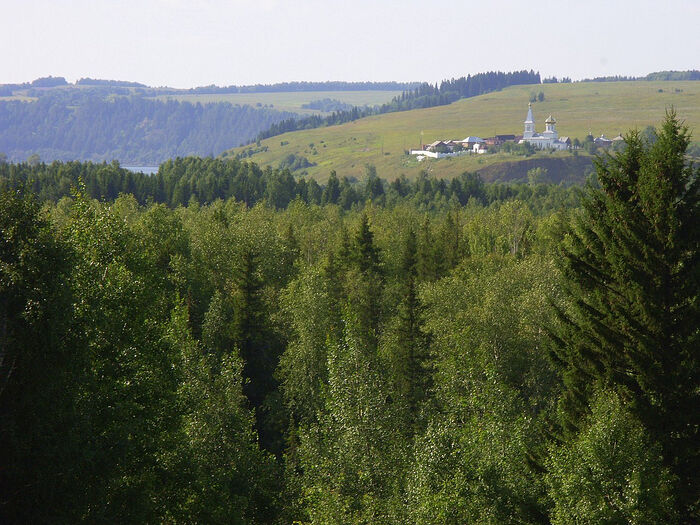
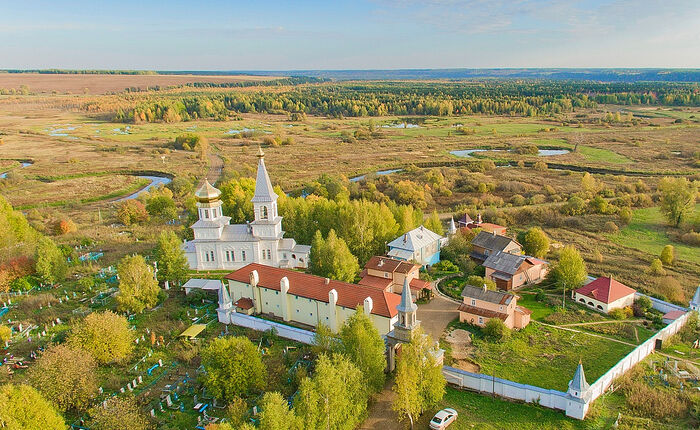
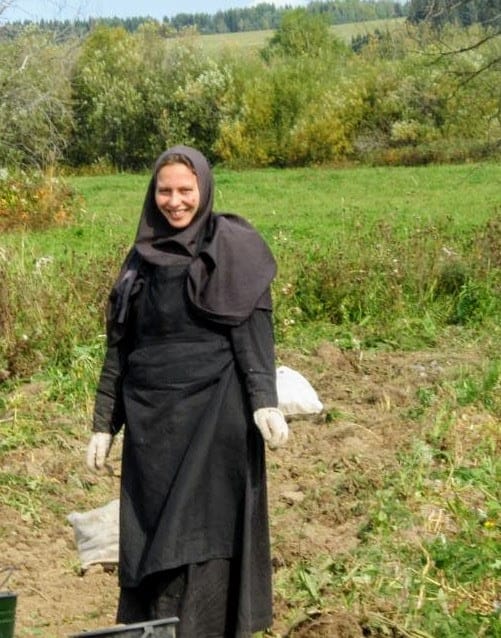
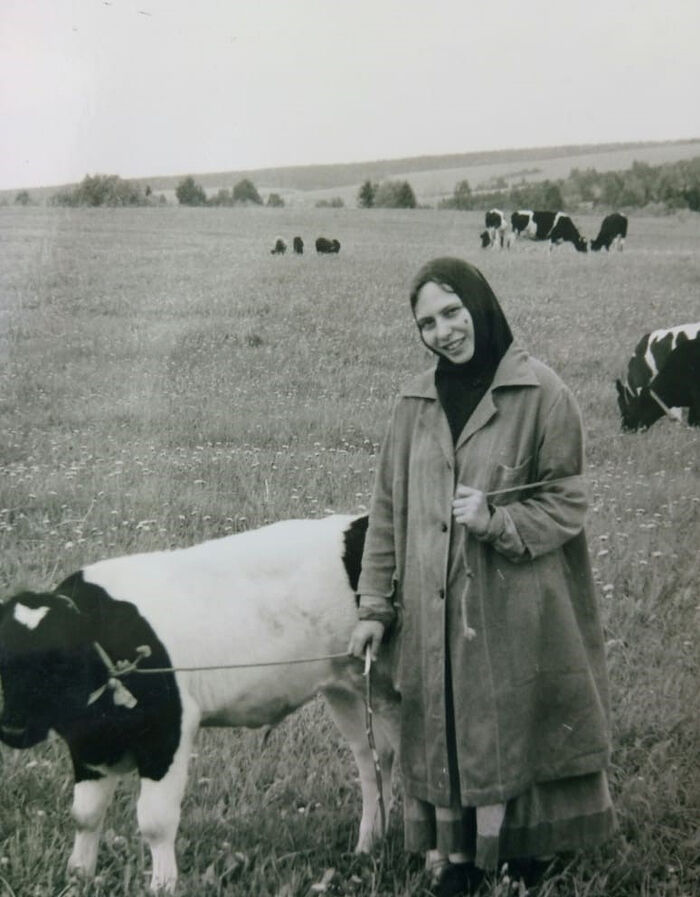
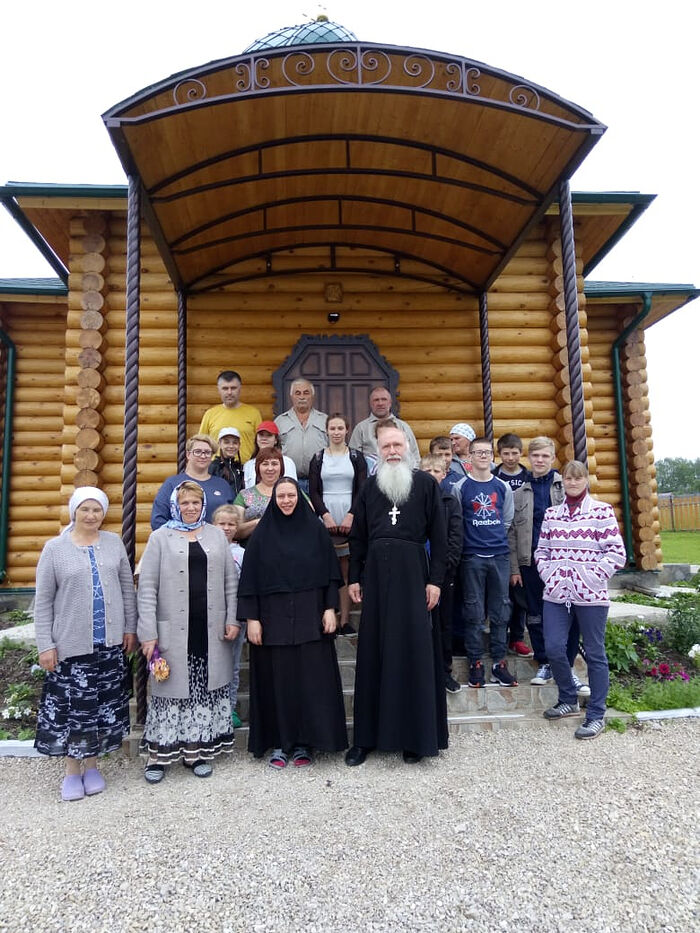
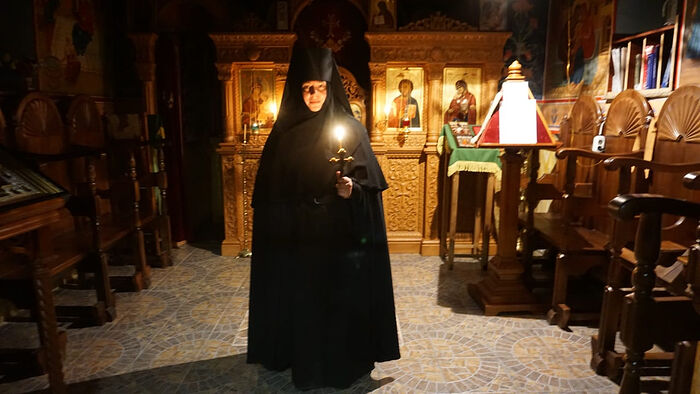
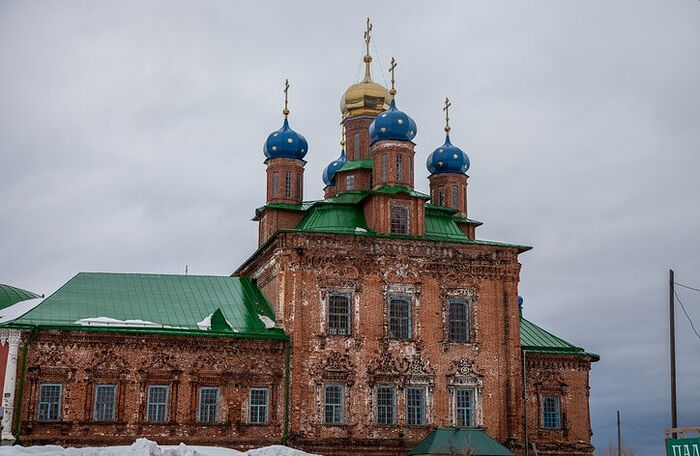
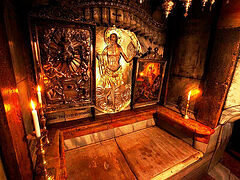
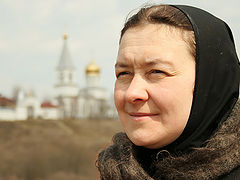
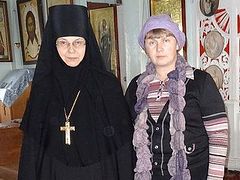
Roger Wilson (USA)